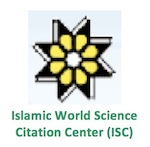


Google Scholar citation report
Citations : 5373
ASEAN Journal of Psychiatry received 5373 citations as per google scholar report
ASEAN Journal of Psychiatry peer review process verified at publons
| Journal Name | ASEAN Journal of Psychiatry (MyCite Report) | ||||
|---|---|---|---|---|---|
| Total Publications | 456 | ||||
| Total Citations | 5688 | ||||
| Total Non-self Citations | 12 | ||||
| Yearly Impact Factor | 0.93 | ||||
| 5-Year Impact Factor | 1.44 | ||||
| Immediacy Index | 0.1 | ||||
| Cited Half-life | 2.7 | ||||
| H-index | 30 | ||||
| Quartile |
|
- Anxiety Disorders
- Behavioural Science
- Biological Psychiatry
- Child and Adolescent Psychiatry
- Community Psychiatry
- Dementia
- Community Psychiatry
- Suicidal Behavior
- Social Psychiatry
- Psychiatry
- Psychiatry Diseases
- Psycho Trauma
- Posttraumatic Stress
- Psychiatric Symptoms
- Psychiatric Treatment
- Neurocognative Disorders (NCDs)
- Depression
- Mental Illness
- Neurological disorder
- Neurology
- Alzheimer's disease
- Parkinson's disease
-
Research
Beneficial Effects of Novel Non-invasive therapeutic Acute Intermittent Hypoxia (AIH) to treat spinal cord injury
Author(s): Atiq Hassan*, Nazim Nasir, Khursheed Muzammil, Mohammad Suhail Khan, Mohammad Rehan Asad and Shadma Wahab Spinal cord injury (SCI) damage the axonal pathways and disrupts synaptic communications between the brain and spinal cord, ultimately affecting multiple body functions and causing lifelong deficits, limiting functional independence. Functional recovery, especially arm function, is the highest priority of the persons living with an SCI. Most of the SCI is incomplete and left some spared axonal pathways. Spontaneous plasticity underlies some functional recovery, but it is slow, variable, and frustratingly limited. However, available therapies to overcome persistent motor deficits after an SCI are very limited. Recently, brief exposures to reduced oxygen (O2) levels alternating with normal O2 levels known as acute intermittent hypoxia (AIH) have emerged as a novel noninvasive therapy. AIH has shown tremendous potential to induce spinal plasticity in respiratory and non-respiratory motor.. Read More» DOI: 10.37532/ ajopy.2022.22(9).1-15


























